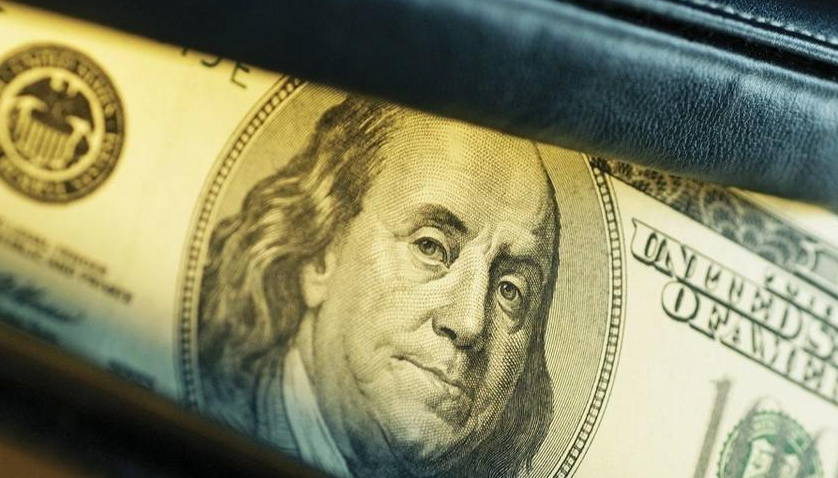US Debt Crisis Looms: Deposits Under Threat
Advertisements
The Federal Reserve, the central bank of the United States, has long held the primary responsibility of ensuring economic stability within the countryRecently, however, the stance of the Fed has turned decidedly hawkish, with officials asserting that the U.Seconomy is on a robust path to recovery, leading to the conclusion that interest rate cuts are unnecessaryThis is a notable pivot, especially when juxtaposed against the alarming economic signals emanating from the U.Smarket, which suggests the very opposite of what the Fed predicts.
One of the most pressing issues resurfacing in public discourse is the potential for a debt default within the United StatesThere are rising concerns regarding a credit card crisis, with indicators suggesting it has reached its highest level since the infamous financial collapse of 2008. As analysts wrestle with the implications of these financial patterns, a question looms: are we on the verge of a new debt crisis?
Warnings of an Emerging Debt Crisis
The general assumption had been that a decrease in interest rates would translate to an economic revival, quelling the financial crises faced by Americans
However, the Fed's rigid approach is drawing a completely different reaction from the marketThe spike in credit card delinquencies is particularly concerning as it approaches levels not seen since the financial crisis of over a decade ago, raising fears that another looming debt crisis could be imminent.
Recent media reports have drawn attention to an alarming trend: while optimism about an American resurgence and stock market growth persists, the reality is starkly contrastingA British media outlet recently highlighted that the anticipated economic crises are not fading but inching closer, further compounding the anxiety felt by analysts and the public.
In fact, credit card debt in the U.Shas reached historical highs unseen since 2008, a year remembered for the devastating subprime mortgage crisisWhat exacerbated that crisis was a considerable exposure within the financial system, leading to a worldwide economic downturn
- Yen Surges as Dollar Faces Christmas Assault
- Bank Fund Fees Under Scrutiny
- SMIC vs. Cambricon: A Tale of Two Chinese Chip Stocks
- Gold Prices Soar as Gold Funds Shine
- How to Engage in International Futures Trading?
In that dreadful year, international collaborations, particularly involving countries like China, were pivotal in mitigating a global catastrophe.
Today, as the financial landscape begins to echo patterns reminiscent of 2008, the situation appears direWithin just nine months of this year, U.Scredit card lenders have written off a staggering $46 billion in bad debt, a figure nearly 50% higher than the same period last year, marking a new high since 2014.
This write-off trend signifies more than just temporary difficulties; these debts are unlikely to be reclaimed regardless of circumstancesFurthermore, initial delinquency rates are climbing, indicating that many borrowers are struggling significantlyThis data suggests that the pressure is mounting among lower-income Americans, who increasingly rely on credit cards to maintain their day-to-day expenses.
Moreover, one prominent credit card lender reported a write-off rate of 6.1%, up from 5.2% in the previous year
These figures reflect a troubling reality—that many Americans are nearing a financial dead end, reliant on credit transactions yet finding themselves unable to meet their repayment obligations.
As the landscape evolves, it is clear that soaring bad debts will not just stay confined to individual financial institutions; they threaten to spill over into broader marketsThis scenario echoes the lessons learned from the subprime crisis, where rising interest rates prevented many from repaying mortgages, leading to widespread mortgage-backed security sell-offs and triggering significant turmoil in the financial sector.
Earlier this year, we witnessed a banking crisis predominantly caused by U.Sgovernment bond prices falling to historic lowsThe underlying issue now, however, is deteriorating consumer fundamentals, suggesting that the very foundation of the U.S

economy is facing unprecedented instability.
At this critical juncture, U.STreasury Secretary Janet Yellen has sounded the alarm, indicating that the U.Swill reach its debt ceiling by January 14 of the following yearThis serves as a clear sign that financial strain is not only affecting low-income Americans, but it has also permeated the governmental levelCould we be approaching a scenario where the looming crisis is no longer sustainable to cover up?
Is Another Subprime Crisis on the Horizon?
With these unprecedented levels of defaults hitting their peak since 2008, one might question why we have yet to witness an explosion of the expected crisisThere is an element of preparedness on the part of the U.Seconomy; however, the question remains: can this preparation truly eliminate the potential for disaster?
While the Fed regularly insists that the U.S
economy is thriving, there is a discrepancy between reported data and real-world impactsEconomic statistics may be manipulated to present a favorable narrative, yet the tangible reality for many lower-income families remains stark—they are facing severe financial hardship.
Much of what has propped up consumer spending can be attributed to financial support provided to lower-income householdsHowever, that support is not infinite, and current conditions indicate we may soon reach that limit.
Moreover, the Fed's increasingly tough stance may reflect its underlying anxietiesEmployment and inflation data can be adjusted and disguised; meanwhile, the central bank's own financial deficits have caught the scrutiny of Wall Street.
The situation is dire; many banks and financial entities are beginning to feel significant pressure
Leave A Reply